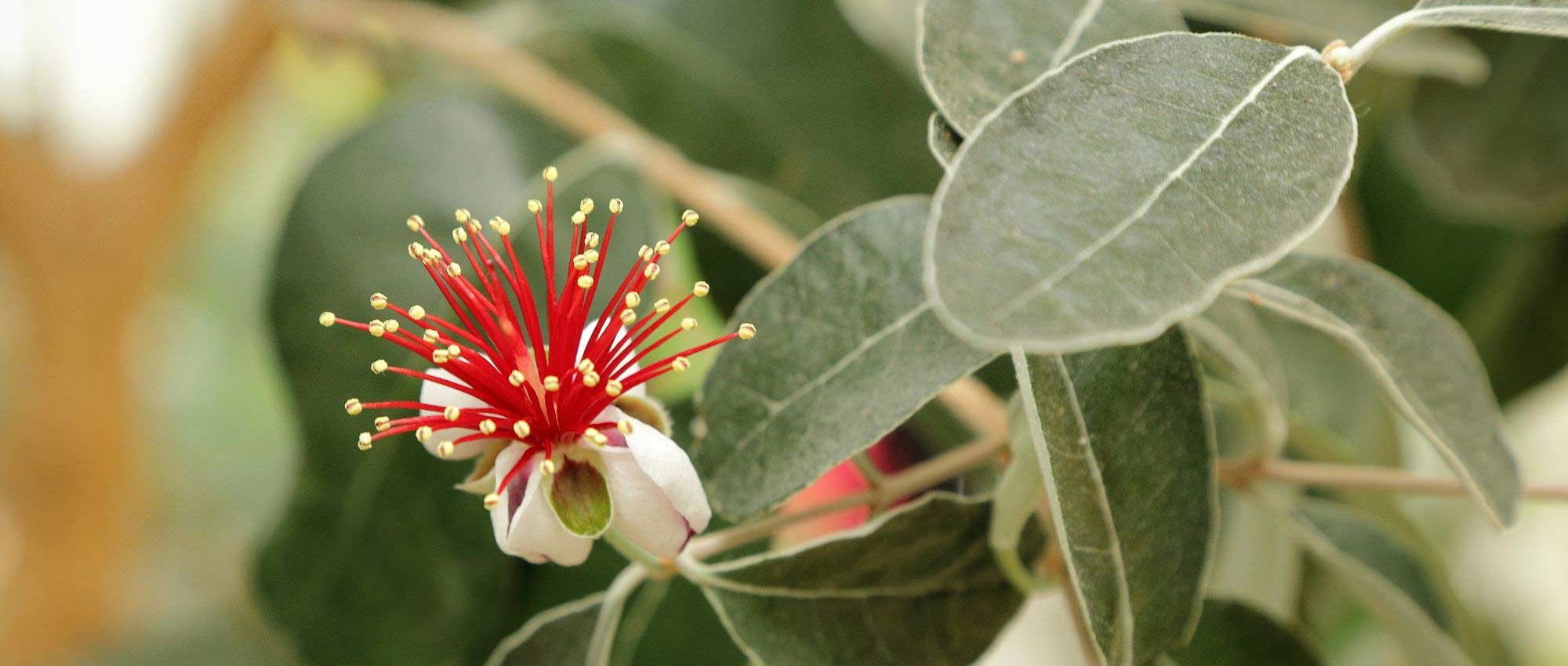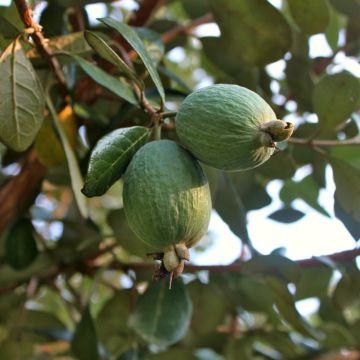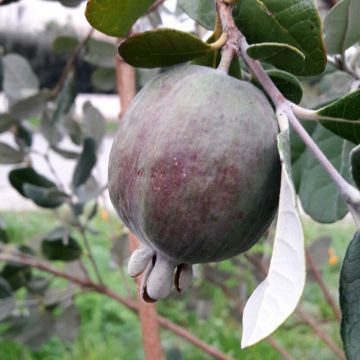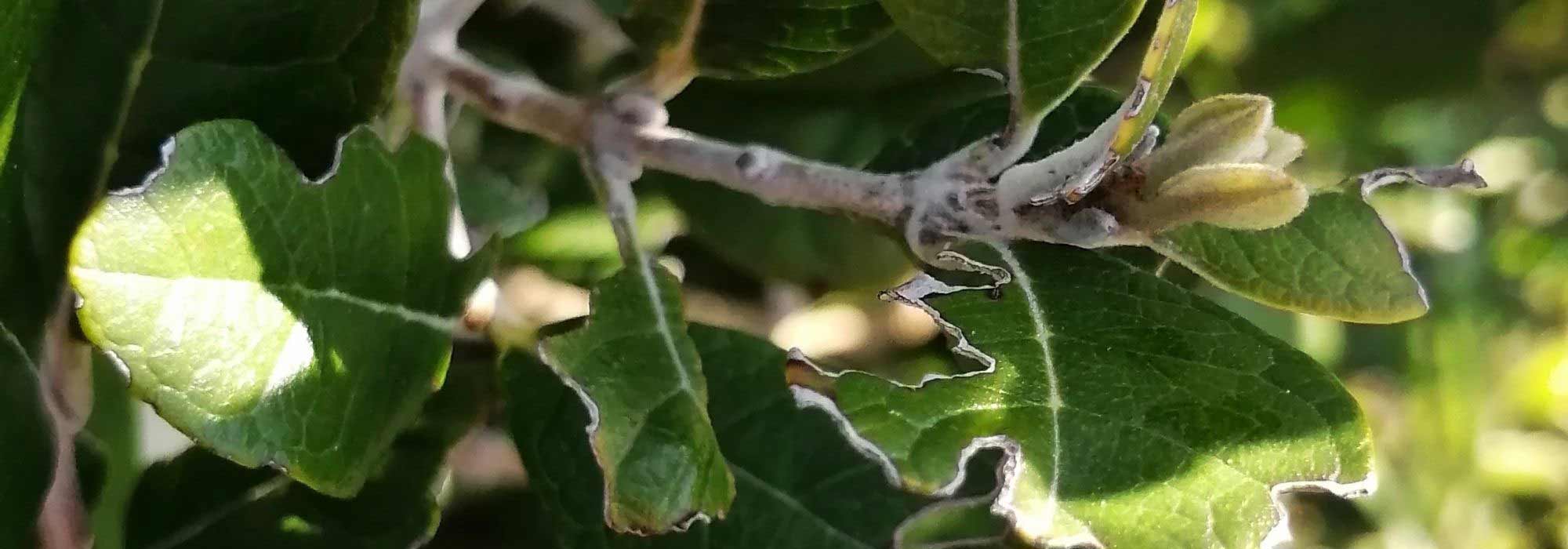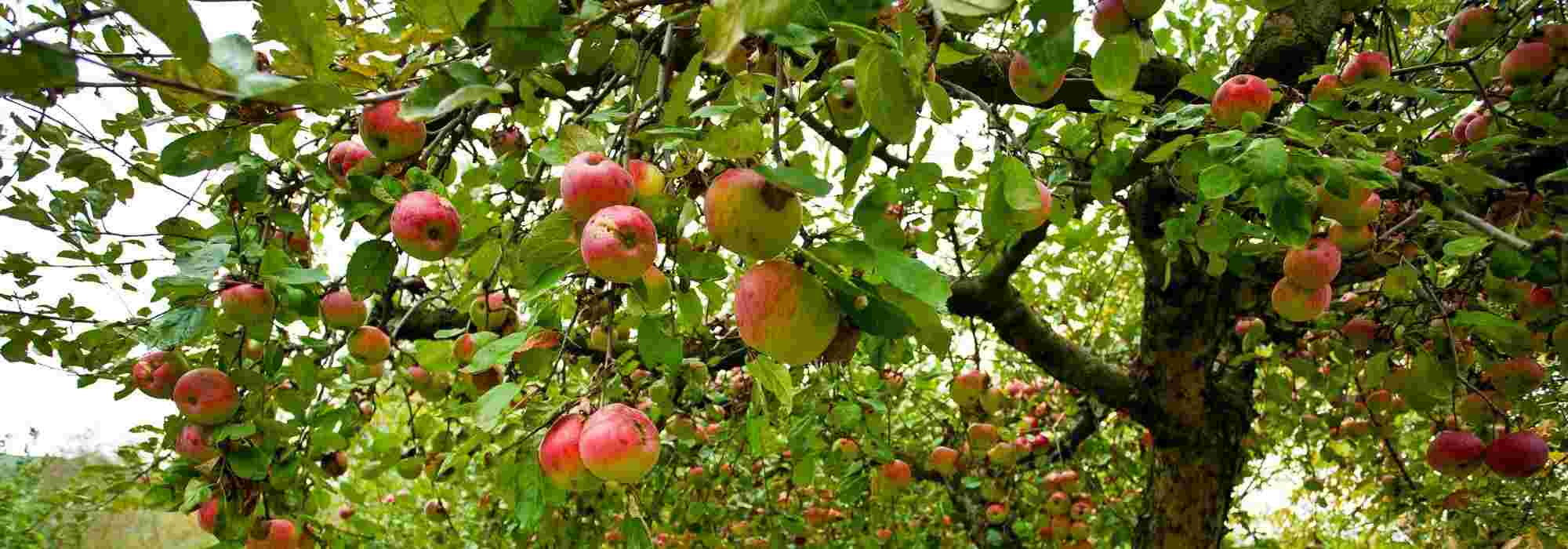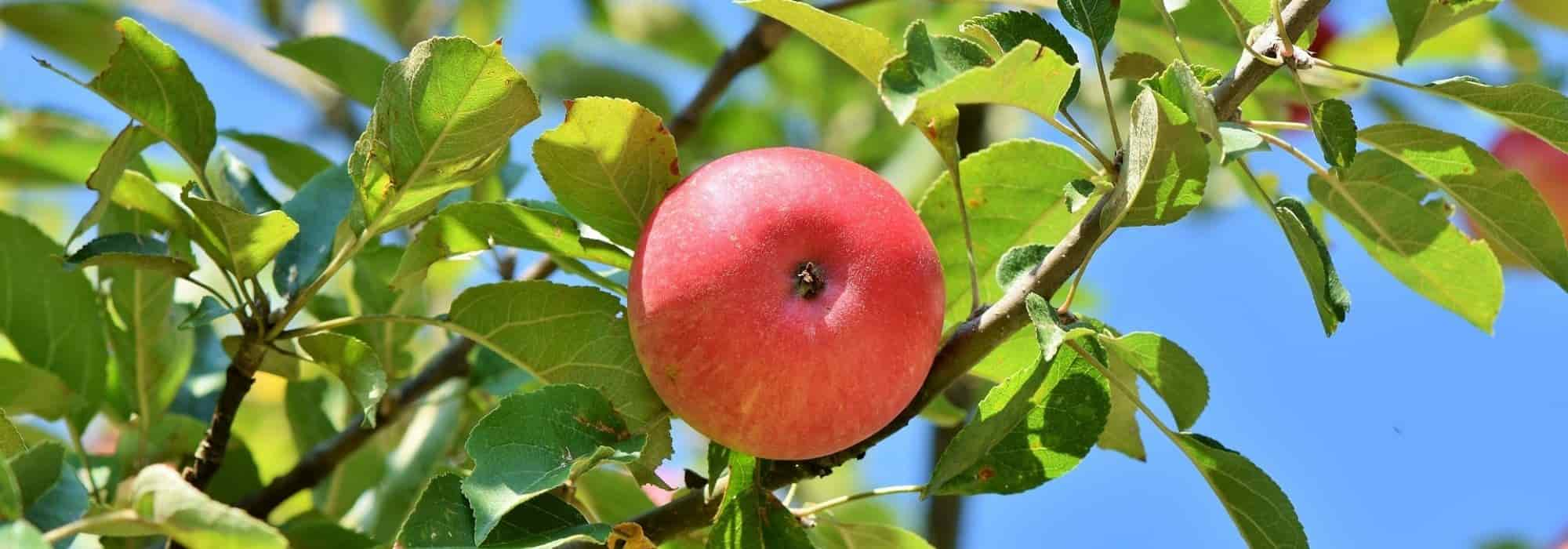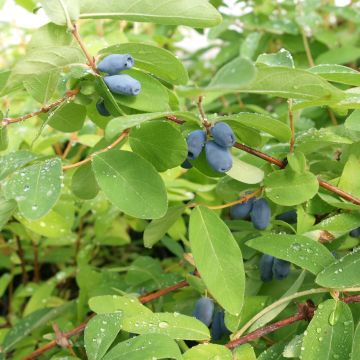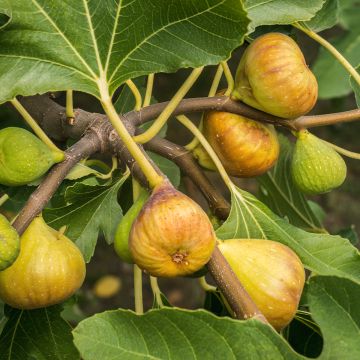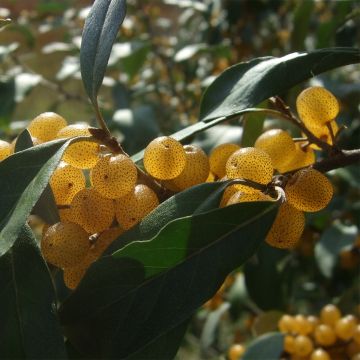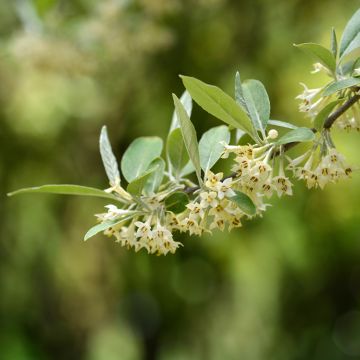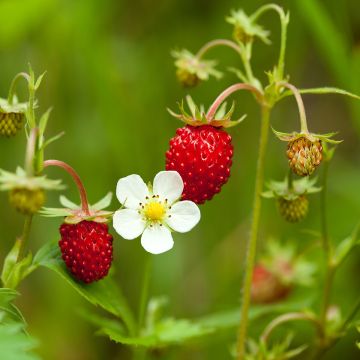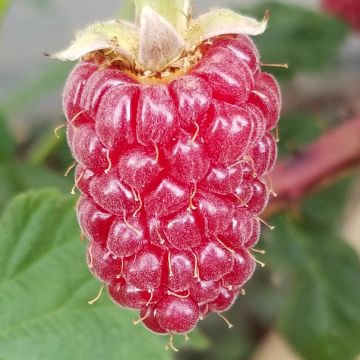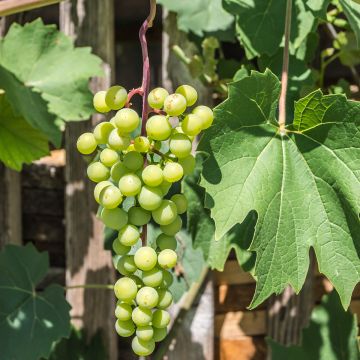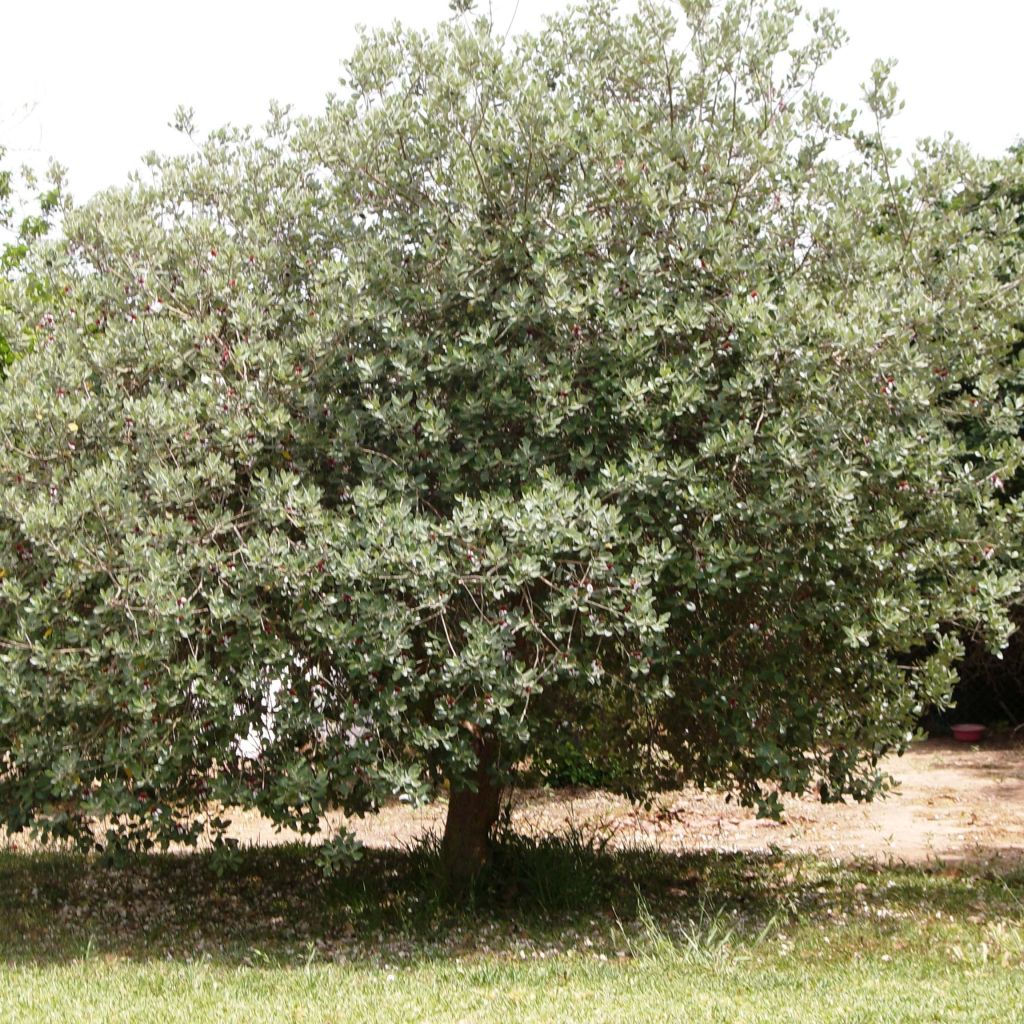

Acca sellowiana
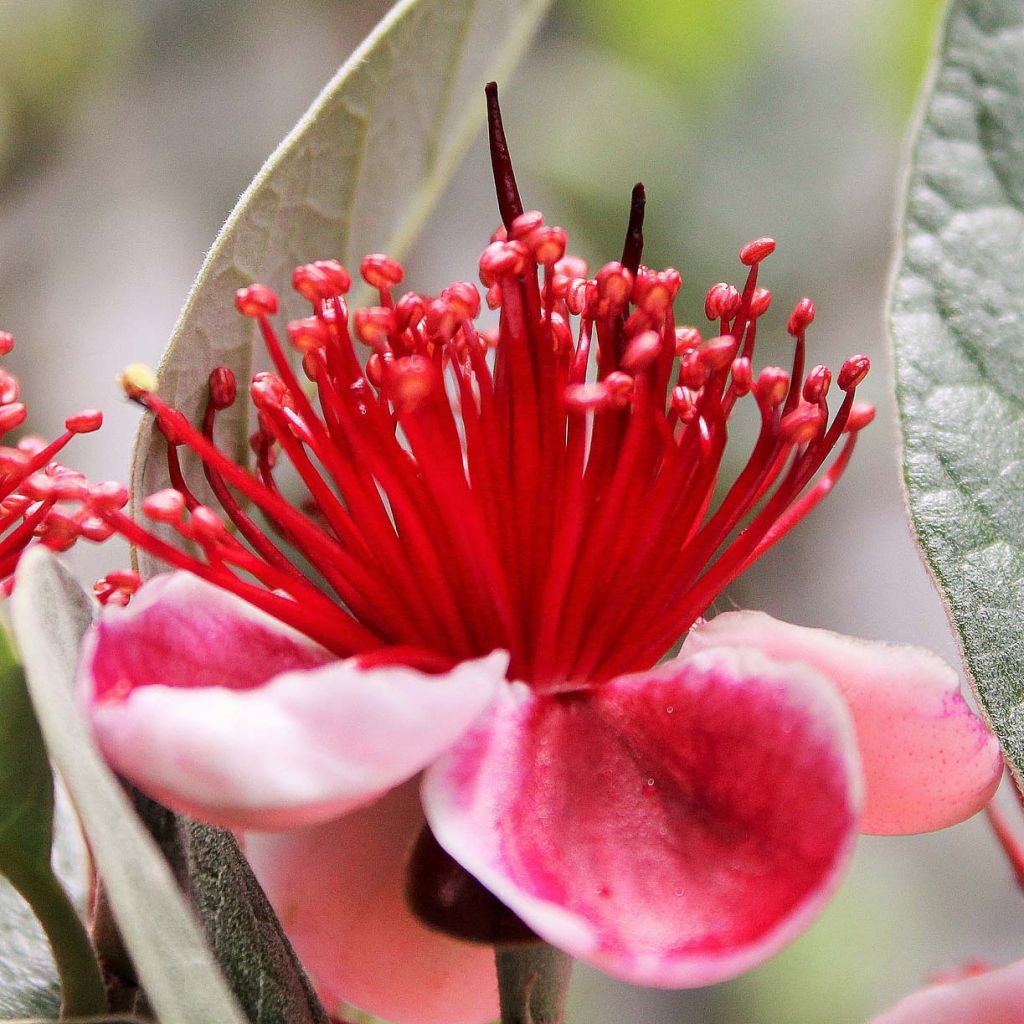

Acca sellowiana
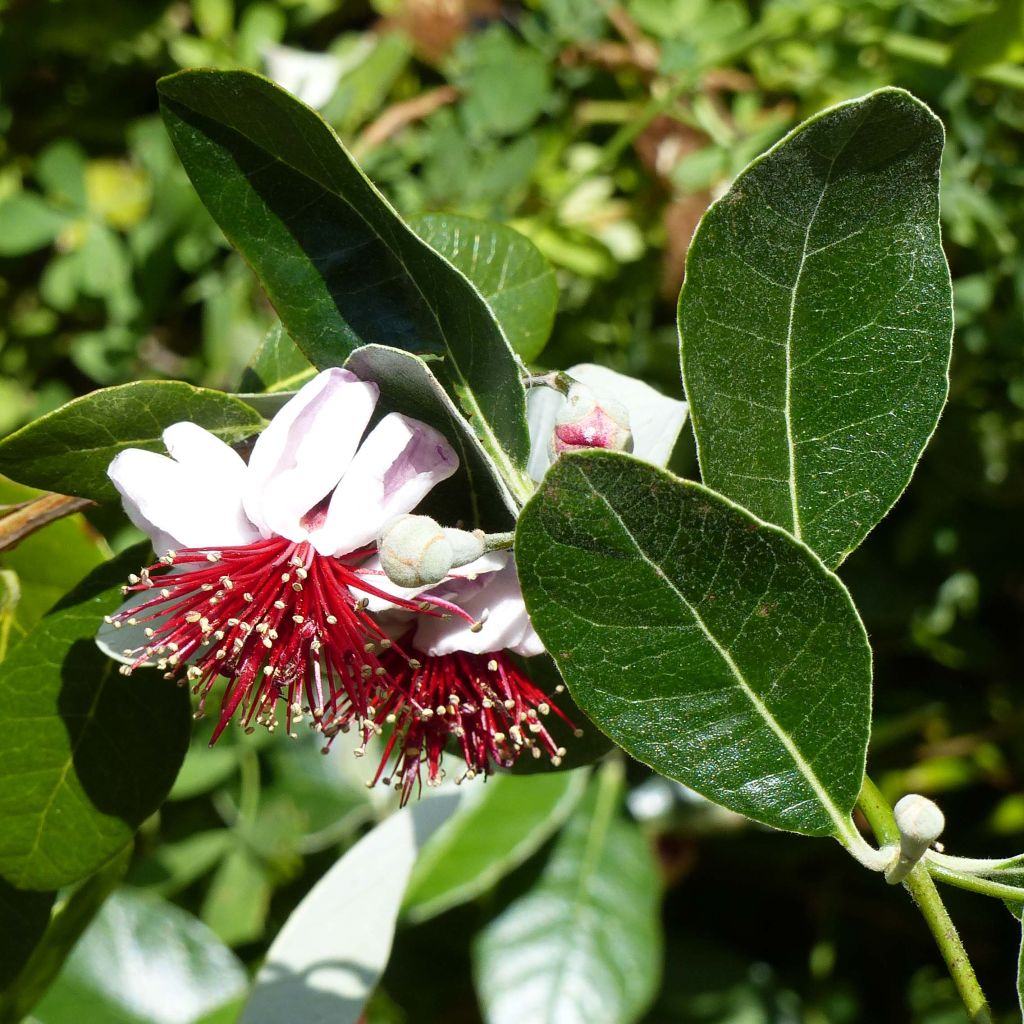

Acca sellowiana
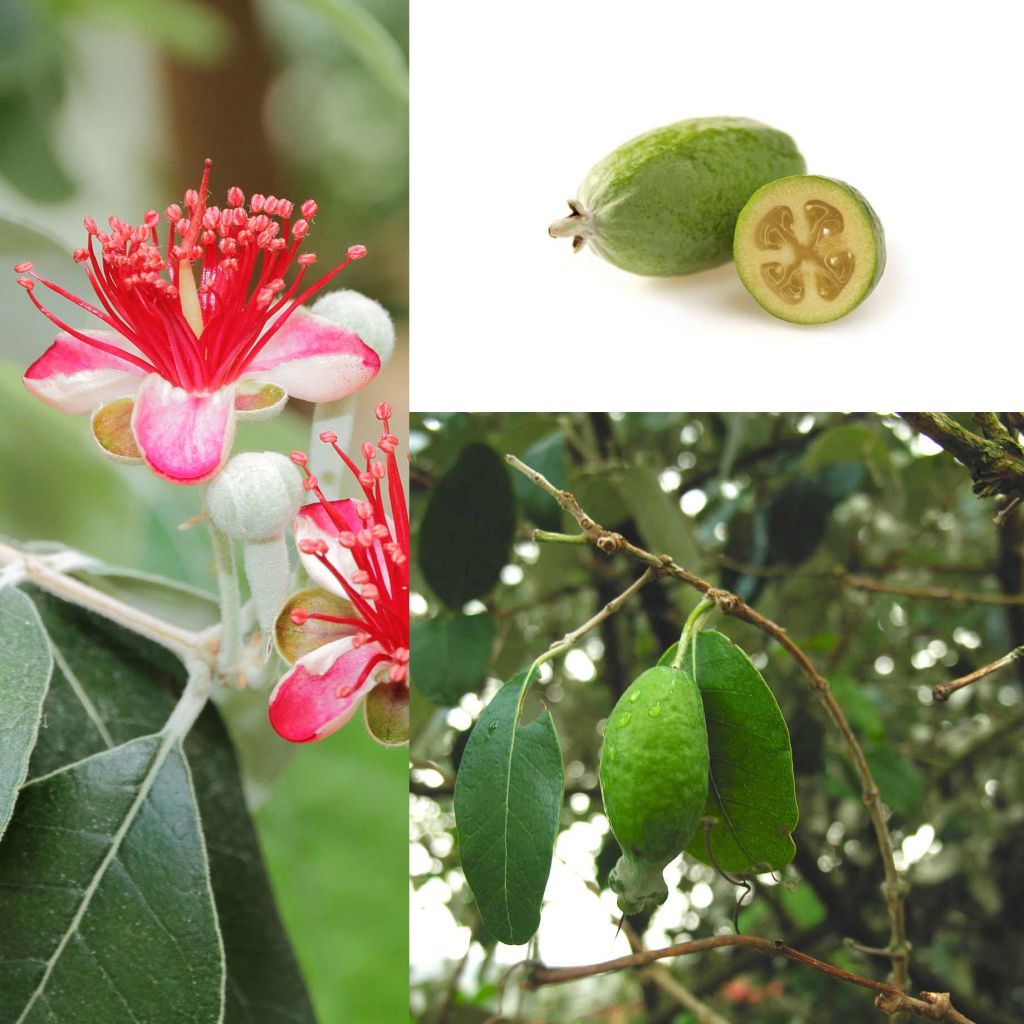

Acca sellowiana
Acca sellowiana
Acca sellowiana
Pineapple guava - feijoa
Plant received in May 2024 and immediately planted in a pot. After 15 days, all the leaves had turned brown/black and started falling off. I immediately contacted Promesse de fleurs who reassured and advised me. 3 months later, it had grown new leaves and today, it is thriving. I am delighted.
LB, 12/02/2025
Special offer!
Receive a €20 voucher for any order over €90 (excluding delivery costs, credit notes, and plastic-free options)!
1- Add your favorite plants to your cart.
2- Once you have reached €90, confirm your order (you can even choose the delivery date!).
3- As soon as your order is shipped, you will receive an email containing your voucher code, valid for 3 months (90 days).
Your voucher is unique and can only be used once, for any order with a minimum value of €20, excluding delivery costs.
Can be combined with other current offers, non-divisible and non-refundable.
Home or relay delivery (depending on size and destination)
Schedule delivery date,
and select date in basket
This plant carries a 6 months recovery warranty
More information
We guarantee the quality of our plants for a full growing cycle, and will replace at our expense any plant that fails to recover under normal climatic and planting conditions.

Description
Acca sellowiana, also called Brazilian Guava or feijoa, is a shrubby tree that produces small green fruits with rough skin and white flesh. The fruits are harvested in late autumn and only reach ripeness in regions with mild winters. The feijoa is a fruit tree but also ornamental, thanks to its beautiful spring flowering.
Different from the guava, the fruit of Acca sellowiana is small, elongated, green and fleshy, with rough skin and white flesh. Rich in vitamin C, its taste is reminiscent of pineapple, guava, and strawberry. The harvest takes place in October and November. It can be eaten raw, cut in half and enjoyed with a spoon, or used to make jams and compotes. It is a fruit that does not keep well.
Native to South America, the Brazilian Guava is a tree with reddish bark and a shrubby habit. It is hardy down to -10° C (14° F). It is a slow-growing tree, reaching a height of 3 m to 6 m (9.8 ft to 19.7 ft). Its greyish-green leaves are evergreen. In May and June, beautiful white flowers with long red stamens appear, which are particularly decorative. They give way to small green fruits, which ripen in late autumn in regions with mild winters. It is recommended to plant at least two trees to allow for cross-pollination and better fruiting.
The Brazilian Guava can be planted as a hedge, as a standalone tree, or in a container for cooler regions. It can be grown in the same zones as kiwi, with fruiting occurring at the same time.
Acca sellowiana in pictures
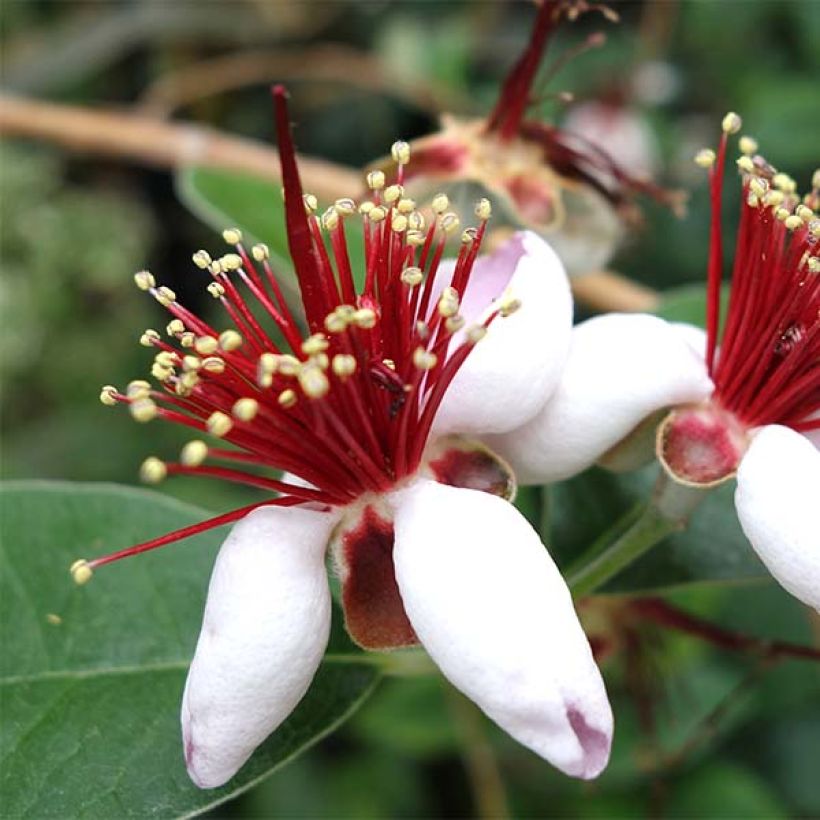

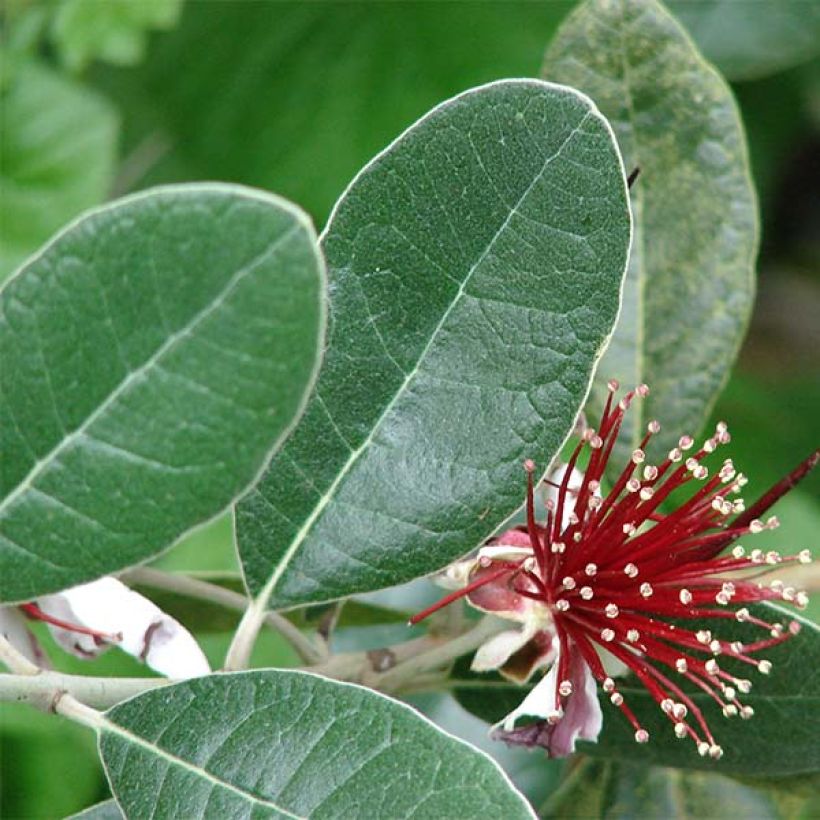

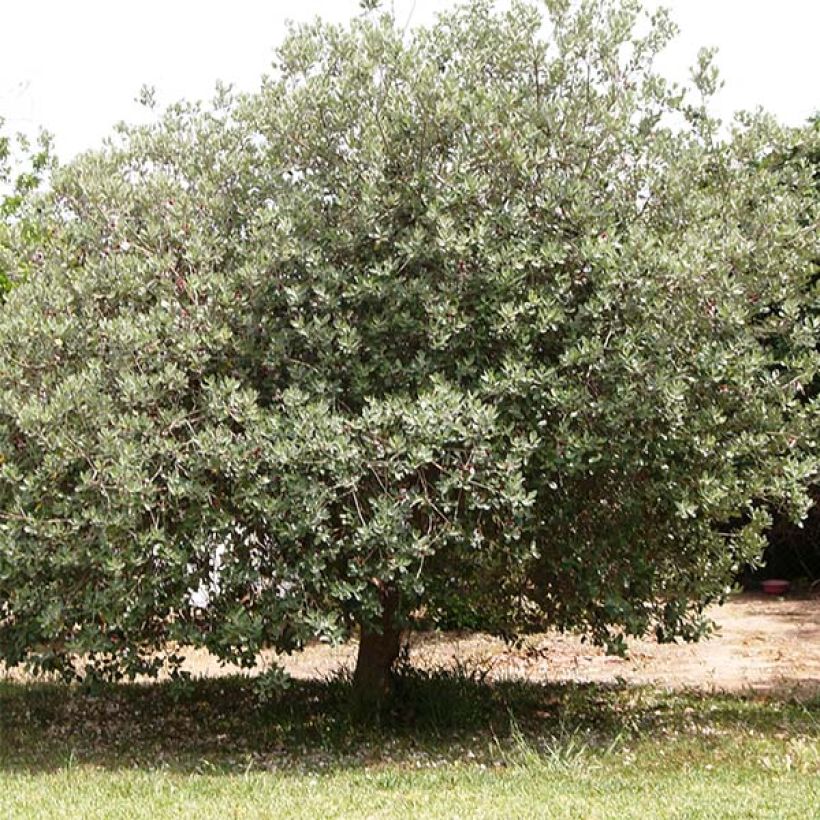

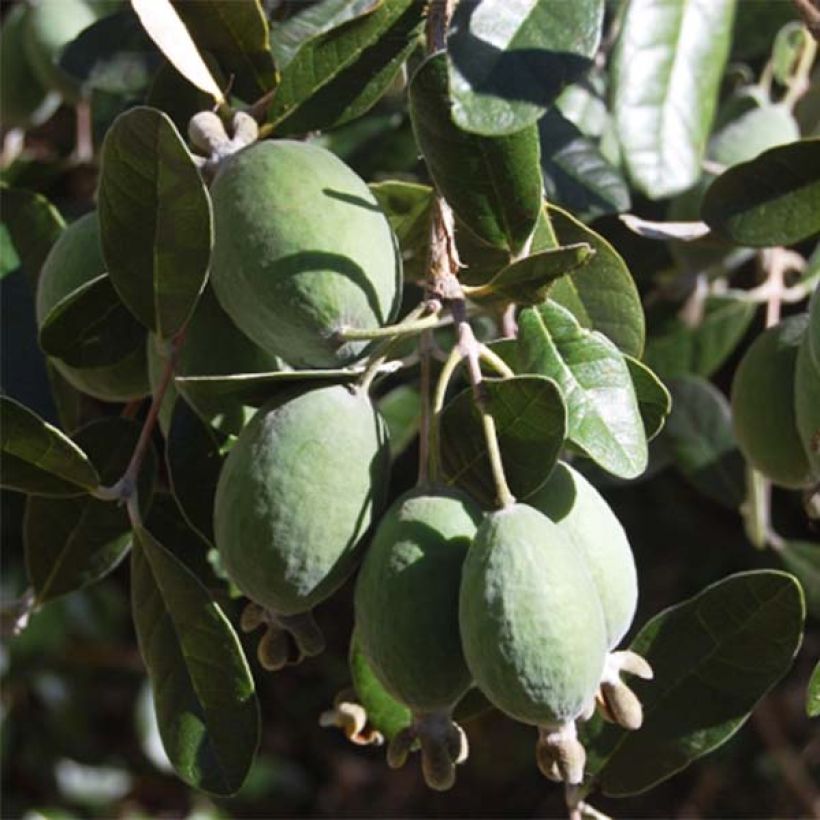

Plant habit
Fruit
Flowering
Foliage
Botanical data
Acca
sellowiana
Myrtaceae
Pineapple guava - feijoa
South America
Other Feijoa trees - Acca
View all →Planting and care
The Brazilian guava thrives in all types of soils, preferably neutral or slightly acidic. It appreciates well-drained soils. It tolerates sea spray and can be planted by the seaside.
Choose a very sunny and sheltered location. Plant in spring or autumn. Dig a hole, add a mixture of garden soil, sand, and compost. Place the young plant, cover with soil, and firm it down. Water generously at planting and regularly during the growth period.
For better fruiting, it is recommended to plant at least two young plants, spacing them 1 m to 1.50 m (3.3 ft to 4.9 ft) apart.
In cooler regions, it is advisable to cultivate it in a pot and overwinter it sheltered from the cold or protect it with a winter veil.
It is not very susceptible to diseases and parasites.
Planting period
Intended location
Care
Planting & care advice
-
, onOrder confirmed
Reply from on Promesse de fleurs
Similar products
Haven't found what you were looking for?
Hardiness is the lowest winter temperature a plant can endure without suffering serious damage or even dying. However, hardiness is affected by location (a sheltered area, such as a patio), protection (winter cover) and soil type (hardiness is improved by well-drained soil).

Photo Sharing Terms & Conditions
In order to encourage gardeners to interact and share their experiences, Promesse de fleurs offers various media enabling content to be uploaded onto its Site - in particular via the ‘Photo sharing’ module.
The User agrees to refrain from:
- Posting any content that is illegal, prejudicial, insulting, racist, inciteful to hatred, revisionist, contrary to public decency, that infringes on privacy or on the privacy rights of third parties, in particular the publicity rights of persons and goods, intellectual property rights, or the right to privacy.
- Submitting content on behalf of a third party;
- Impersonate the identity of a third party and/or publish any personal information about a third party;
In general, the User undertakes to refrain from any unethical behaviour.
All Content (in particular text, comments, files, images, photos, videos, creative works, etc.), which may be subject to property or intellectual property rights, image or other private rights, shall remain the property of the User, subject to the limited rights granted by the terms of the licence granted by Promesse de fleurs as stated below. Users are at liberty to publish or not to publish such Content on the Site, notably via the ‘Photo Sharing’ facility, and accept that this Content shall be made public and freely accessible, notably on the Internet.
Users further acknowledge, undertake to have ,and guarantee that they hold all necessary rights and permissions to publish such material on the Site, in particular with regard to the legislation in force pertaining to any privacy, property, intellectual property, image, or contractual rights, or rights of any other nature. By publishing such Content on the Site, Users acknowledge accepting full liability as publishers of the Content within the meaning of the law, and grant Promesse de fleurs, free of charge, an inclusive, worldwide licence for the said Content for the entire duration of its publication, including all reproduction, representation, up/downloading, displaying, performing, transmission, and storage rights.
Users also grant permission for their name to be linked to the Content and accept that this link may not always be made available.
By engaging in posting material, Users consent to their Content becoming automatically accessible on the Internet, in particular on other sites and/or blogs and/or web pages of the Promesse de fleurs site, including in particular social pages and the Promesse de fleurs catalogue.
Users may secure the removal of entrusted content free of charge by issuing a simple request via our contact form.
The flowering period indicated on our website applies to countries and regions located in USDA zone 8 (France, the United Kingdom, Ireland, the Netherlands, etc.)
It will vary according to where you live:
- In zones 9 to 10 (Italy, Spain, Greece, etc.), flowering will occur about 2 to 4 weeks earlier.
- In zones 6 to 7 (Germany, Poland, Slovenia, and lower mountainous regions), flowering will be delayed by 2 to 3 weeks.
- In zone 5 (Central Europe, Scandinavia), blooming will be delayed by 3 to 5 weeks.
In temperate climates, pruning of spring-flowering shrubs (forsythia, spireas, etc.) should be done just after flowering.
Pruning of summer-flowering shrubs (Indian Lilac, Perovskia, etc.) can be done in winter or spring.
In cold regions as well as with frost-sensitive plants, avoid pruning too early when severe frosts may still occur.
The planting period indicated on our website applies to countries and regions located in USDA zone 8 (France, United Kingdom, Ireland, Netherlands).
It will vary according to where you live:
- In Mediterranean zones (Marseille, Madrid, Milan, etc.), autumn and winter are the best planting periods.
- In continental zones (Strasbourg, Munich, Vienna, etc.), delay planting by 2 to 3 weeks in spring and bring it forward by 2 to 4 weeks in autumn.
- In mountainous regions (the Alps, Pyrenees, Carpathians, etc.), it is best to plant in late spring (May-June) or late summer (August-September).
The harvesting period indicated on our website applies to countries and regions in USDA zone 8 (France, England, Ireland, the Netherlands).
In colder areas (Scandinavia, Poland, Austria...) fruit and vegetable harvests are likely to be delayed by 3-4 weeks.
In warmer areas (Italy, Spain, Greece, etc.), harvesting will probably take place earlier, depending on weather conditions.
The sowing periods indicated on our website apply to countries and regions within USDA Zone 8 (France, UK, Ireland, Netherlands).
In colder areas (Scandinavia, Poland, Austria...), delay any outdoor sowing by 3-4 weeks, or sow under glass.
In warmer climes (Italy, Spain, Greece, etc.), bring outdoor sowing forward by a few weeks.






























